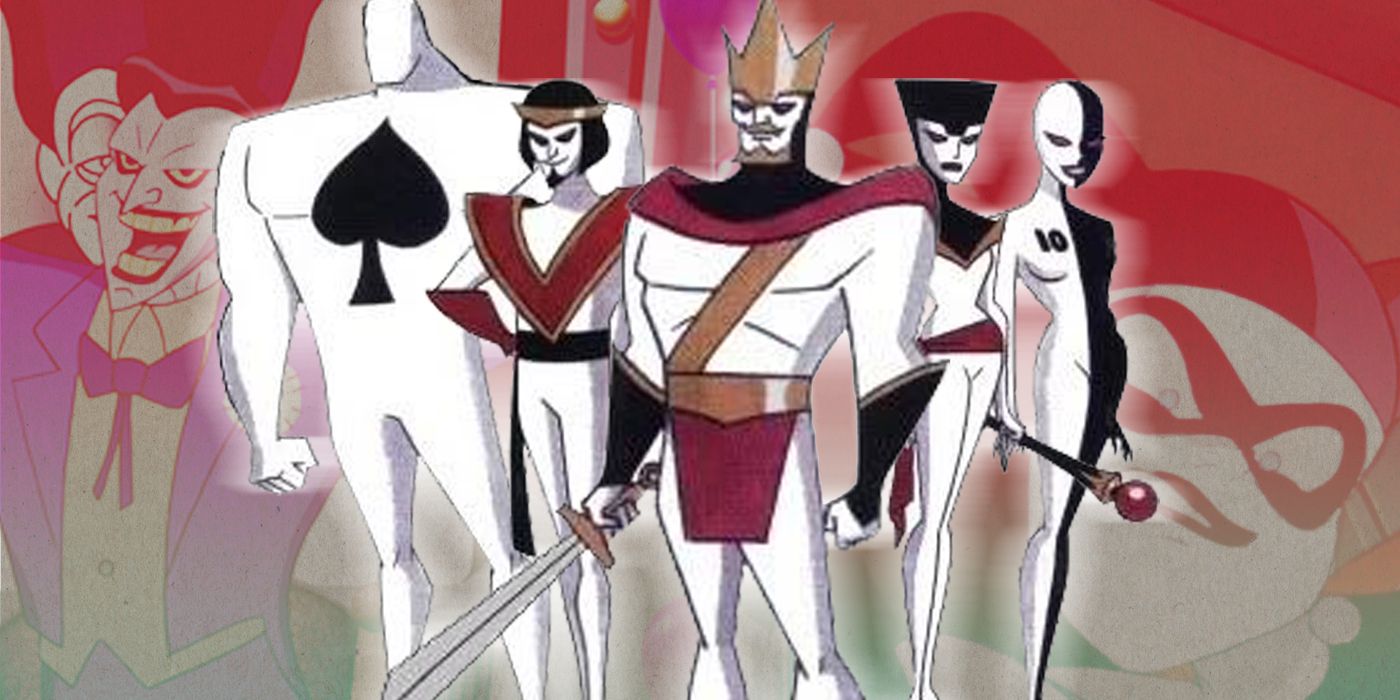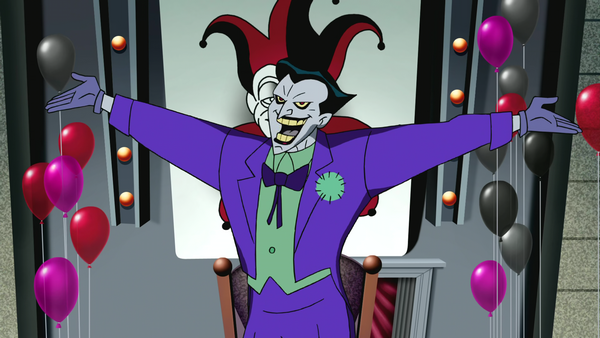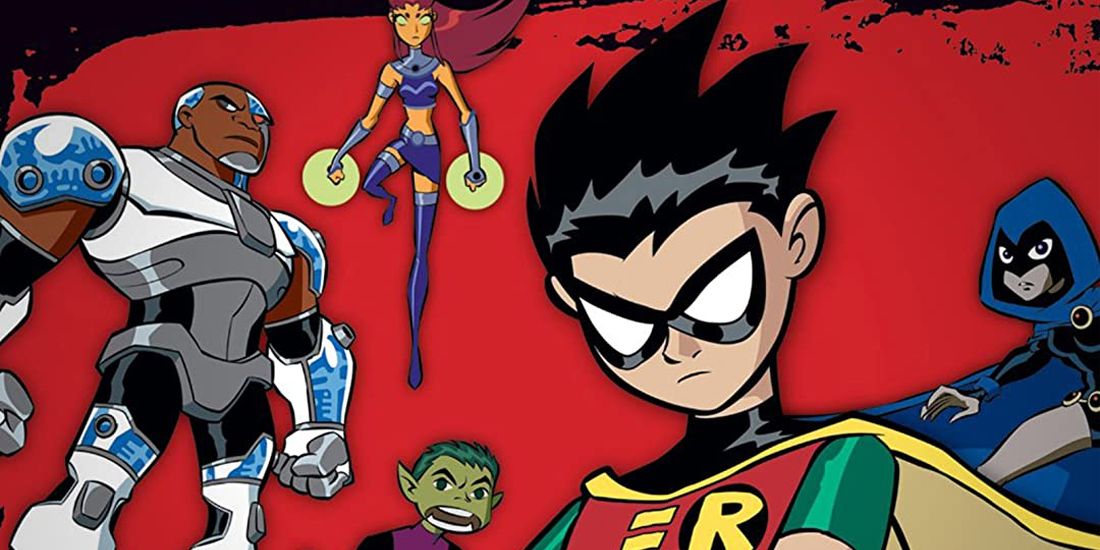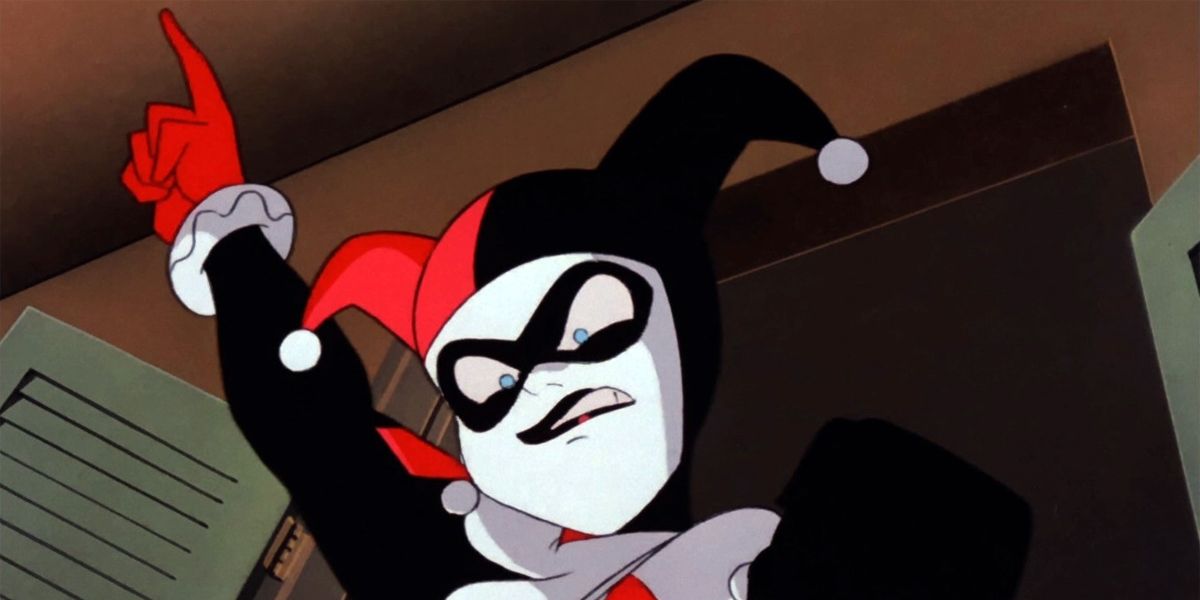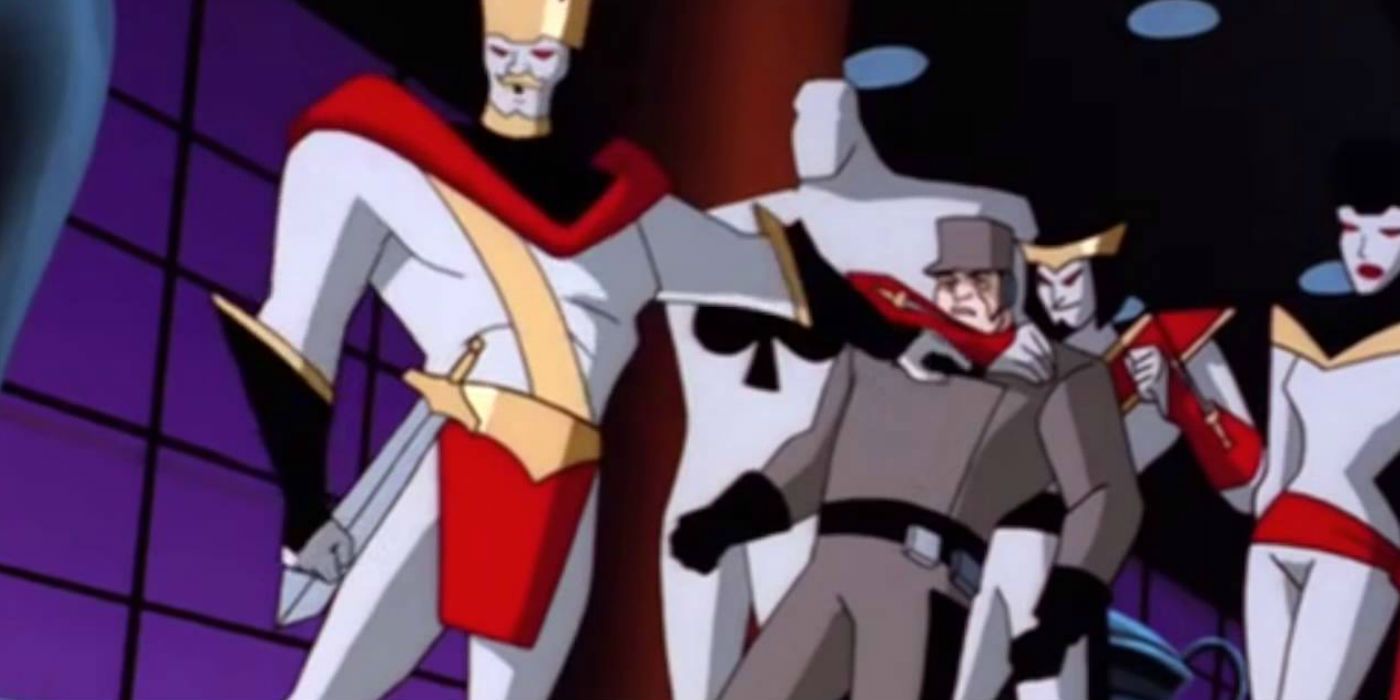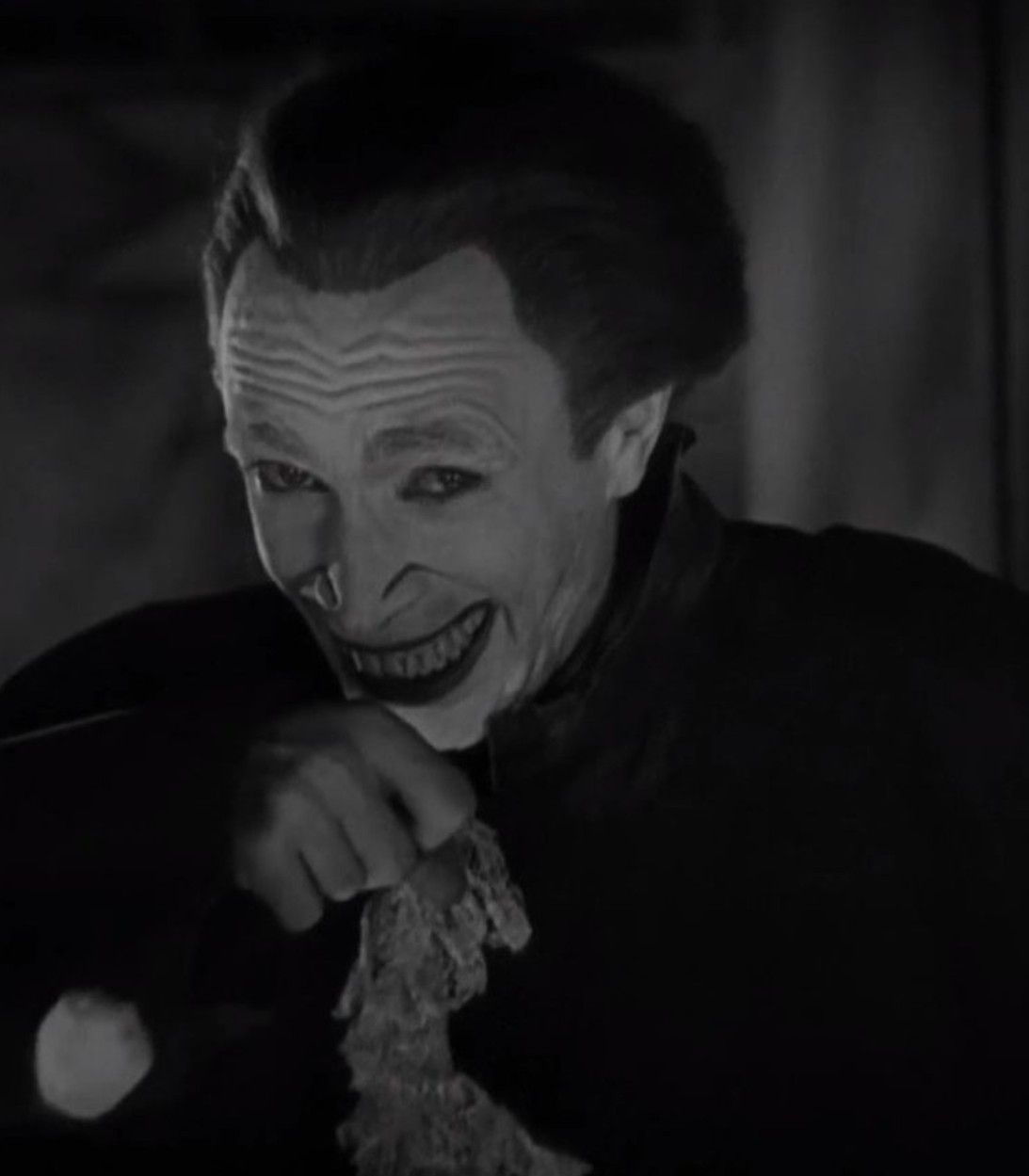Welcome to Adventure(s) Time's 140th installment, a look at animated heroes of the past. This week, we'll explore the Royal Flush Gang, a concept with virtually no consistency within the DC Animated Universe -- be it with the tie-in comics, or the shows themselves. And if you have any suggestions for the future, let me know on Twitter.
Airing on December 6, 2003, "Wild Cards" is a two-parter from Justice League's second season. Stan Berkowitz and Dwayne McDuffie provide the script, while Butch Lukic is the director. The premise has the Joker utilizing his own super-team, a collection of government experiments known as the Royal Flush Gang, and holding Las Vegas hostage. Joker announces he's placed a series of bombs that will destroy the Strip in 22 minutes and 51 seconds (the actual length of a broadcast television episode at the time, minus the commercials...today, it's closer to only 20 minutes) if they're not stopped by the Justice League.
Pairing the Joker with the Royal Flush Gang makes a certain amount of sense. For one, both villains share playing card gimmicks. For another, the Joker on his own isn't a credible opponent for a collective of superheroes, so the writers have to conceive of some way to power him up. Giving Joker his own team of villains is a decent way to avoid the issue. The Royal Flush Gang have a history in the comics going back to March 1966's Justice League of America #43. They even made a previous animated appearance years earlier in a 1985 Super Powers episode called "The Wild Cards."
The context of 2003's "Wild Cards" is important. In the early 2000s, 24 was a hit for FOX, utilizing the gimmick that each episode was occurring in real-time. Here, a clock is added onscreen to indicate the Justice League are disarming these bombs in...something close to real-time (there a few instances of the producers cheating just a bit.) The episode's 2003 airing also places it in a notable period during the War on Terror. Enough time had passed since the events of 9/11 for dubious portrayals of government intelligence agencies to return without controversy. While also serving as a quickie origin for the Royal Flush Gang, the presence of unscrupulous government operatives foreshadows future storylines (and less than flattering portrayals of political power) on Justice League Unlimited.
Also airing in these days is Teen Titans, a popular Cartoon Network series starring another group of DC heroes. The tone and animation style of Teen Titans was so drastically different from the DCAU programs, most fans rejected any thought of it occurring in the same universe. And while the shows never truly crossed over, the producers did use this episode to create a sly homage to Teen Titans.
Each Royal Flush Gang member is voiced by a lead Teen Titans actor. Some fans have even drawn connections between the Gang member and that actor's Titans character. Scott Menville's King acts as the leader, and wields a metal staff like Robin. Greg Cipes' Jack is a shapeshifter, just like Beast Boy. Khary Payton's Ten is a muscular strong man, similar to Cyborg. Tara Strong's Queen utilizes telekinesis, as does Raven. Hynden Walch's Ace doesn't have an obvious link to Starfire, however, aside from large, glowing eyes. Some question if she was intended as an analogue to Raven, given her powers and demeanor, but perhaps the producers simply felt Tara Strong worked best as Queen.
Running between the superheroics are two romantic threads. One is the ongoing flirtation between Green Lantern and Hawkgirl. We're introduced to them this episode courtesy of a provocative voiceover that teases the two of them are engaged in, well, "relations." Then, the camera cuts to the Watchtower's interior and reveals the heroes are merely arguing over Green Lantern's use of their computer database. Over the course of the story, Hawkgirl is forced to save Lantern's life via an electroshock from her mace, and the duo share a kiss as he recovers in bed. It's the culmination of nearly two years of teasing, and while this might initially seem like a touching romantic moment, it's more of a setup for the traumatic revelations of the upcoming "Starcrossed" series finale.
The other source of romantic tension lies on the villains' side. Batman plays on Harley Quinn's jealousy of Joker's newest "ally," the ultra-powerful telepath Ace. She arrives at the Joker's studio, ready to confront him, inadvertently leading Batman to their hideout. This leads to a brutal showdown with both Joker and Ace that has Batman pitted against her telepathic powers. Ultimately, Batman manages to pilfer a mind-control headband from the Joker's pocket. The sight enrages Ace, who remembers how the government device was once used against her. She turns her powers against the Joker, then escapes.
Interestingly, the producers weren't bothered at all by the Royal Flush Gang's previous appearance on Batman Beyond...a show set decades in the future. In that reality, the Gang is a family of upper-class thieves called the Walkers. Their introductory episode, 1999's "Dead Man's Hand," explained their titles were passed down for generations, and these are the latest family members to don the monikers. The team menaces Gotham until they're defeated by future Batman, Terry McGinnis.
Clearly, this has nothing to do with a secretive government project that studies kids born with superpowers. A later episode of Justice League Unlimited pokes fun of the contradictions by having shadowy bureaucrat Amanda Waller acknowledge the confusion: "The Justice League found themselves cleaning up one of my old messes. The second group of villains to call themselves the Royal Flush Gang. Or the third—who can keep it all straight?"
One place you couldn't expect to find any of this being kept straight was the tie-in comic. Earlier Adventures titles from DC at least put a good faith effort into fitting comfortably within the television's DCAU stories. This focus didn't carry over into Justice League Adventures, which featured quite a few character interpretations that would soon be contradicted by the show. (Creators of the comic weren't even told of Hawkgirl's secret backstory, not unveiled on the show until its series finale.) The comic's follow-up, Justice League Unlimited -- the comic, not the animated series -- would go on to feature the Royal Flush Gang twice. Feature two versions of the Gang in two issues, that is.
Justice League Unlimited #23 from writer Mike McAvennie and penciler Leigh Gallagher is entitled "Heroes." The Royal Flush Gang could be swapped out with any villainous group, to be honest. The plot has the League protecting civilians jeopardized by the Gang, as the events are detailed by a policeman unaware he's speaking to the Martian Manhunter in disguise.
2008's Justice League Unlimited #42 is more specifically a Royal Flush Gang story. Only not any version of the Gang we've seen before. The issue's solicitation boasted this was an untold tale from the Justice League's past, set before the formation of its expanded Unlimited roster. One sign of this is Green Lantern's haircut, which doesn't match his bald Unlimited look. Presumably, this was an inventory story that had been sitting in the drawer for years, finally published during the waning days of the Unlimited tie-in book.
"Raw Deal," from writer Dan Raspler and penciler Christopher Jones centers on Una Hitchens, the Queen of a previously unrevealed Royal Flush Gang, this one consisting of small-time Suicide Slum criminals. Their King is only identified as Henry, a voice tempting the paroled Una to rejoin her previous life. (There is a line from Henry declaring the Justice League version "that poseur team the government named after us." Except it was the Joker who conceived their gimmick.) Wonder Woman believes in Una, attempting to act as a role model. Green Lantern, however, is convinced that scum doesn't change and vows to keep an eye on her.
Eventually, circumstances have Una reclaiming her role as Queen and joining the Gang on an arson assignment. A heartbroken Wonder Woman has to send her back to prison, as Lantern asserts that Una is beyond redemption. The closing scene reveals, however, that Una's intimidated the corrupt businessman who hired the Gang earlier into doing charitable work with his money. The story has a little more depth than the era's average tie-in comic...but it's amusing to think the DCAU has just been gifted yet another alternate take on the Royal Flush Gang.
DESIGN-Y
"Wild Cards" marks the first time the DCAU Hawkgirl is seen without her mask. Her design is very much the classic "Timm Girl," a reference to Bruce Timm's tendency to render females with girlish features and heart-shaped faces.
CONTINUITY NOTES
A later Justice League Unlimited episode entitled "Fearful Symmetry" establishes that the Royal Flush Gang were products of Amanda Waller's Project Cadmus. Another Justice League Unlimited episode, "Epilogue," reveals the genetics technology utilized by Joker against Tim Drake in Batman Beyond: Return of the Joker's flashback sequence came from Cadmus. It's conceivable he stole the tech from Cadmus when he freed the Royal Flush Gang.
OVER THE KIDDIES' HEADS
The Joker's dummy company is called "Gwynplaine Entertainment," which is a reference to Gwynplaine, the hero of Victor Hugo's novel The Man Who Laughs. Gwynplaine is a circus performer who was once mutilated by having a permanent grin carved into his face. Batman's creator, Bob Kane, acknowledged Conrad Veidt's portrayal of Gwynplaine in the 1928 film adaptation as an inspiration for the Joker. Any image from the film shows a clear influence.
"JACK, TEN, KING, AND...UHH...QUEEN!"
It's unlikely the producers simply forgot the Royal Flush Gang's Batman Beyond appearances, given that one member was Batman's Catwoman-inspired love interest. And it's not as if they were dismissive of continuity at this point, as the second Justice League season is when the show is embracing the history of the DCAU. Perhaps they felt it wasn't so hard to create a fan theory to hand wave the alternate Gangs away.
What's important is the quality of the episode. And "Wild Cards" is a great example of what the show does best. Tense action, fluid animation, and solid character work. It would be easy to turn this into a Batman spotlight story, but the producers are able to pay off Green Lantern and Hawkgirl's subplot while also giving Batman his cool moments. Unfortunately, the Royal Flush Gang seem to inspire appearances as a generic villain team, which has made their place in the DCAU needlessly murky.

